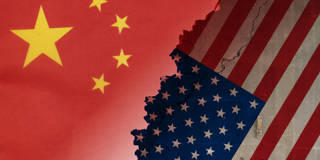While former US President Donald Trump and Chinese President Xi Jinping each played important roles in ending Sino-American engagement, the death of the policy started with the 2008 global financial crisis. That is when Chinese elites concluded that America was in decline, and that China need no longer bide its time.
CAMBRIDGE – When Chinese President Xi Jinping met with US President Joe Biden last fall, some interpreted it as a return to engagement. In fact, it heralded only a minor détente, not a major change in policy.
The United States’ engagement with the People’s Republic of China began with Richard Nixon in 1972 and was expanded by Bill Clinton. Since then, critics have described US policy as naive, owing to its failure to understand the Communist Party of China’s long-term objectives. Underpinning the policy was the prediction, from modernization theory, that economic growth would propel China down the same liberalizing path as other Confucian societies like South Korea and Taiwan. Xi, however, has made China more closed and autocratic.
Still, America’s engagement policy always had a realistic dimension. While Nixon wanted to engage China to balance the Soviet threat, Clinton made sure that engagement accompanied a reaffirmation of the US-Japan security treaty for the post-Cold War era. Those who accuse Clinton of naivete ignore that this hedge came first, and that the US-Japan alliance remains a robust and fundamental element of the balance of power in Asia today.

CAMBRIDGE – When Chinese President Xi Jinping met with US President Joe Biden last fall, some interpreted it as a return to engagement. In fact, it heralded only a minor détente, not a major change in policy.
The United States’ engagement with the People’s Republic of China began with Richard Nixon in 1972 and was expanded by Bill Clinton. Since then, critics have described US policy as naive, owing to its failure to understand the Communist Party of China’s long-term objectives. Underpinning the policy was the prediction, from modernization theory, that economic growth would propel China down the same liberalizing path as other Confucian societies like South Korea and Taiwan. Xi, however, has made China more closed and autocratic.
Still, America’s engagement policy always had a realistic dimension. While Nixon wanted to engage China to balance the Soviet threat, Clinton made sure that engagement accompanied a reaffirmation of the US-Japan security treaty for the post-Cold War era. Those who accuse Clinton of naivete ignore that this hedge came first, and that the US-Japan alliance remains a robust and fundamental element of the balance of power in Asia today.